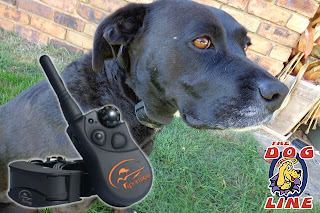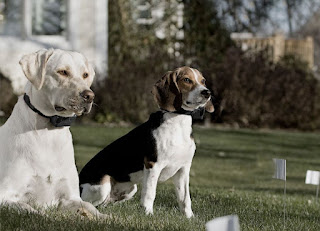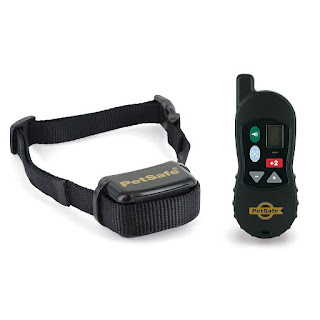
How to Use Vibration Collar to Train Dog
This article explains how to train your dog with a vibration collar. You can bond with your pet and correct bad behavior by using this item gently. Whether you’re a seasoned dog owner or a first-time pet owner, our step-by-step guide on How to Use Vibration Collar to Train Dog will teach you how to communicate and influence your dog’s behavior. Let’s teach your dog together and unlock its full potential!
What’s a vibration collar?
An electrical gadget called a vibration collar, vibration training collar, or remote dog training collar helps train and modify dogs. The owner or trainer uses a portable remote control to vibrate the dog’s collar. Communication with moderate vibrations helps teach directives and address bad behavior.
Purpose
Vibration collars help dogs learn by providing a non-harmful tactile stimulus. It may promote good behavior, discourage bad behavior, and improve dog-handler communication. The vibrating collar is excellent when the dog is far away, and vocal orders may not work. It does not hurt the dog, making it a compassionate alternative to shock collars.
How It works
The vibration collar uses association and conditioning. When the handler initiates the vibration using the remote, the dog’s neck feels different. The dog learns to link the vibration with the intended action or response by repeatedly coupling it with a command or behavior. The dog internalizes this link, allowing the handler to learn and modify behavior with the vibration collar.
Selecting a Vibration Collar
Consider Dog Size and Breed
The size and breed of your dog should be considered when buying a vibration collar. Different vibration collars fit different neck sizes and weights. A well-fitted collar delivers vibrations correctly and comfortably. For tiny dogs, use lightweight collars, while larger breeds may need stronger ones.
Check vibrations
Adjustable vibration collars are common. A collar with many intensity levels lets you adjust the vibrations to your dog’s sensitivity and temperament. Dogs may respond better to lower vibrations or greater stimuli. Adjusting vibration levels lets you discover the right intensity for dog training.
Choose Waterproof, Durable Collars
Dogs encounter rain, muck, and water. Thus, a waterproof, robust vibration collar is essential. This feature keeps the collar working when your dog becomes wet or rough. A waterproof collar is more practical and prevents you from removing and re-putting it in different weather conditions
Assess Battery Life and Rechargeability
Consider the vibration collar’s battery life and rechargeability. Look for collars with good battery life for uninterrupted training. Rechargeable batteries are cheaper and greener than disposable ones, so the collar should contain them. Make sure the collar has an easy-to-use charging method.
Review and Compare Brands
Before buying a vibration collar, read reviews and compare brands. Get advice from dog owners and trainers who have used certain models. Consider brand quality, reliability, and consumer pleasure. You may choose the best vibration collar for your dog by researching and considering many variables.
Introducing the Collar to the Dog
Introduce the Collar Slowly
How to Use Vibration Collar to Train Dog Make sure your dog likes the vibration collar; introduce it slowly. First, let your dog sniff and check the collar before wearing it. Start by having your dog wear the collar for brief durations, such as during meals or playing. This slow approach lets your dog adjust to the collar without overpowering them.
Remember Good Collar Experiences
Associate the vibration collar with fun canine activities to make it positive. Treat, praise, and show affection while your dog wears the collar to reinforce the pleasant and gratifying experience. By matching the collar with pleasant experiences, your dog will like it and be more willing to train with it.
Let the Dog Wear the Collar Unactivated
First, let your dog wear the collar without triggering the vibrations. Your dog learns to associate the collar with neutral experiences during this phase. Letting the dog wear the collar without activation teaches them that the collar is not the source of the vibration but a tool for teaching and communication.
Create a Positive Training Environment
Locate Without Distraction
Training with the vibration collar requires a distraction-free environment. This keeps your dog focused on training without distractions. A calm, familiar place like your garden or a training location is perfect for good training.
Maintain Timing and Consistency
Successful dog training requires timing and consistency. When using the vibrating collar, administer the vibration stimuli immediately after a command or when the dog is doing the desired behavior. Time consistency helps your dog associate the vibration with the desired activity. It’s crucial to apply the vibrating collar regularly to reinforce desirable behavior.
Use positive reinforcement.
Vibration collar training requires positive reinforcement. For reinforcement, use verbal praise, rewards, or a clicker with vibration stimulation. This pleasant association makes your dog want to do it again. Use meaningful prizes and tailor reinforcement methods to your dog’s preferences.
Avoid punishment or repercussions
Training with a vibration collar should not include punishment or negative reinforcement. The collar encourages positive and compassionate dog training. Punishment can cause dread, anxiety, and aggressiveness, hampering training. Instead, use positive training to reinforce good conduct and correct bad behavior.

Teaching Basic Commands using Vibration Collar
Sit
Teaching your dog to sit is a fundamental command. Steps to utilize the vibration collar for this command:
Fit the vibration collar snugly and pleasantly on your dog.
Hold a goodie over your dog’s nose.
Say “sit” and gently push the remote’s vibration button.
When your dog’s bottom reaches the ground, release the vibration and praise and treat them.
Continue until your dog sits on command, gradually diminishing vibration stimuli.
Stay
Dogs need to learn to remain for safety and obedience. Follow these steps to train “stay” using the vibration collar:
Start with your dog sitting or standing.
Ask your dog to “stay” and activate a modest vibration.
Step back and convey the instruction with your hand.
Return to your dog and praise and treat them for staying.
Continue to extend the stay and distance between you and your dog, using the vibration collar for encouragement.
Come
Training your dog to come when called is essential for safety and control. Follow these procedures to reinforce “come” with the vibration collar:
Fit the vibration collar on your dog.
In a low-distraction situation, call your dog and say, “Come.”
To catch your dog’s attention, also activate the vibration collar slowly.
Release the vibration and praise your dog when they approach.
Give your dog a treat and attention when they arrive.
Gradually increase distance and distractions while using the vibrating collar to reinforce “come”.
Leave It
To keep your dog from eating or picking up dangerous things, teach the “leave it” command. Steps to train with the vibration collar:
Put a toy or reward on the ground.
Tell your dog to “leave it” while using a low-vibration collar.
Release the vibration and praise and treat your dog if they back away from the item.
Increase complexity by employing more appealing products and greater vibrations with practice.
Heel
The “heel” order teaches your dog to walk gently beside you. Steps to reinforce this directive using the vibration collar:
Put the vibration collar on your dog and leash it.
Walk your dog on your favorite side. When your dog pulls or deviates, engage the vibration collar slowly.
Keep pressing the vibration button while repositioning your dog.
Release the vibration and praise and treat your dog for walking by you.
Till your dog walks peacefully by your side without vibrations, practice and reinforce the “heel” command with the vibration collar.
Correcting Behavior with a Vibration Collar
Treating Overbarking
Barking can annoy neighbors and cause conflict. Steps to correct this habit using the vibration collar:
Find out what makes your dog bark excessively.
At low volume, engage the vibration collar when your dog barks excessively.
The vibration stimulation distracts and stops your dog from barking.
Reward your dog and release the vibration when he stops barking.
With regular use, your dog will identify the vibrating collar as quieting down, minimizing barking.
Reducing Destructive Chewing
Dogs chew destructively, damaging home belongings and posing safety risks. The vibration collar can reduce this behavior.
When your dog chews improperly, engage the vibration collar slowly.
The vibration distracts your dog from the thing.
After your dog releases the thing or stops chewing, remove the vibration and provide a suitable chew toy.
Using the vibrating collar and offering alternatives will teach your dog what to chew on and what not to.
Preventing Digging
Dogs who dig excessively can destroy landscaping and muck up your yard. Use a vibration collar to deter this.
Observe your dog’s digging spots.
When your dog digs, engage the vibration collar slowly.
The vibration deters digging and focuses your dog.
When your dog stops digging, release the vibration and praise or treat them.
The vibration collar will inhibit digging over time if used consistently.
Stop Jumping
When your dog is huge or energetic, jumping on people can be harmful. Try the vibrating collar to train your dog to quit jumping.
When your dog jumps on you or others, engage the vibration collar slowly.
The vibration prevents your dog from jumping and sends the message that jumping is wrong.
Release the vibration and praise your dog when their paws are down.
With persistent vibrating collar use, your dog will learn not to leap.
Deterring Aggression
Address and rectify your dog’s aggression toward humans or animals. This procedure can benefit from the vibration collar.
When your dog becomes aggressive, use a low-vibration collar.
The vibration distracts your dog from the aggression.
Release the vibration and praise and treat your dog when it calms down or stops being hostile.
For safety, seek a professional dog behaviorist or trainer when dealing with aggressive behavior.

Setting the Vibration Collar Properly
How to Use Vibration Collar to Train Dog? Start with the lowest vibration
How to Use Vibration Collar to Train Dog? Use the lowest vibration level while introducing the vibration collar. You may familiarize your dog with the sensation without overpowering them. Assess your dog’s response and comfort to ensure no suffering or discomfort. Starting from the bottom allows you to change intensity later in the training process.
Increase intensity gradually if required.
As your dog becomes used to the vibrating collar, you may need to raise the intensity to get the appropriate response. However, you must make these improvements gradually and prioritize your dog’s comfort and well-being. Watch your dog’s reactions and adjust the intensity. Remember to apply the least amount of stimulus to get the desired behavior.
Watch the Dog’s Comfort and Response
Watch your dog’s responsiveness and comfort when wearing a vibrating collar. Check for stress or discomfort indications such as vocalizing, excessive scratching, or collar removal. If your dog appears distressed, stop using the vibrating collar and check their comfort. It’s crucial to customize the collar to your dog’s requirements and preferences.
Avoid Harm or Overstimulation
When utilizing a vibrating collar, responsible pet owners and trainers must prevent overstimulation and harming their dogs. Always follow the collar manufacturer’s safety and use recommendations. Avoid using the vibrating collar for long periods or at excessive intensities that might injure your dog. To keep your dog comfortable, examine their skin for inflammation and give them plenty of collar breaks.
Enhancing Vibration Collar Training with Rewards
Positive reinforcement with treats
Vibration collar training with treats is effective. Pick tiny, soft, and tasty snacks your dog enjoys. Treat and praise your dog promptly when it obeys a command. Treats reinforce your dog’s comprehension of the intended action and encourage good behavior.
Praise and affection
Positive reinforcement training requires verbal praise and compassion. Give goodies and hearty verbal praise, such as “good boy” or “good girl,” immediately. Petting, snuggling, and belly massages are further loving reinforcements. Verbal praise and physical love boost your dog’s pleasant experience, building your relationship and improving vibration collar training.
Use Clicker Training
Clicker and vibration collar training are easy to combine. Clickers are little portable devices that click. Clicker sounds become conditioned reinforcers when paired with positive rewards. Click the vibration collar to note the desired behavior, then give a vibration stimulus and goodies. The dog associates the clicking sound with the vibration and learns that good conduct deserves a reward.
Establish Rewards
A reward system gives training structure and incentives. Set training goals and praise your dog when they reach them. Tracking progress with a sticker chart or notepad and rewarding good behavior or commands is straightforward. The incentive system motivates you and your dog, making training more successful.

Being Consistent and Patient
Maintain the training schedule.
Training with a vibration collar requires consistency. Schedule daily training sessions. A steady schedule helps dogs learn. Frequent, short workouts are more beneficial than infrequent, long ones. Keep to the program and be consistent, and your dog’s behavior will improve.
Avoid Conflicting Messages
Inconsistencies and contradictory signals confuse dogs and hamper training. Clear and consistent directives and expectations are crucial. Use the vibration collar with vocal orders regularly to ensure the vibration follows within context. Use consistent voice signals and vibration collar settings to avoid confusion and poor training.
Have patience and persist
Teaching a dog requires time, patience, and effort. Setbacks are natural since dogs learn at their own speed. Be patient with your dog as they acclimate to vibration collar training. Celebrate modest wins and keep going even if progress is sluggish. Maintaining motivation and changing behavior requires consistency and positivity.
Celebrate Progress, Change Methods
Celebrate your dog’s training progress. Milestones and behaviors are steps to achievement. Reward your dog with praise, food, and affection. Adjust your training methods as your dog grows. Every dog has different requirements, strengths, and limitations; therefore, training should be individualized.
How to Use Vibration Collar to Train Dog? Help from a Professional Trainer
Knowing When to Get Professional Help
It’s often essential to visit a professional dog trainer; however, a vibration collar can help. If your dog has ongoing behavioral difficulties, aggressiveness, fear, or you don’t know how to utilize the vibration collar, get expert guidance. A professional dog trainer may assess your dog’s behavior, conduct vibration collar training, and create a personalized training plan to address particular issues.
Finding a Certified Dog Trainer
Ask local veterinarians, pet supply businesses, and dog owners for qualified dog trainer suggestions. Choose trainers accredited by recognized organizations like the Certification Council for Professional Dog Trainers. Check their qualifications, reviews, and training techniques. A licensed dog trainer with a good reputation and great customer reviews can help you teach your dog.
Advice and Feedback Request
Professional trainers give hands-on help, advice, and criticism during training. A trainer may evaluate your dog’s development, suggest improvements, and suggest training changes. Their knowledge and experience may help you get the best vibration collar outcomes and teach your dog well.
Understanding Safety and Limitations
Vibration collars are useful but have limits. Not all dogs will respond the same way to it. Some dogs may be extremely sensitive to vibrations, while others may need training. Follow the manufacturer’s instructions for safe and responsible vibration collar use to protect your dog. To protect your dog’s safety and training success, seek expert help if you have concerns about his reaction or well-being.
Conclusion of How to Use Vibration Collar to Train Dog
In conclusion, How to Use Vibration Collar to Train Dog, a vibration collar can help train and change canine behavior. It may improve communication and discourage bad habits with correct selection, introduction, and use. You can safely train your dog with a vibration collar by following the guidelines in this article, choosing the right collar, getting your dog used to it, creating a positive training environment, teaching basic commands, addressing unwanted behaviors, and using positive rewards. Be consistent, patient, and praise your dog’s development. When required, seek expert help. With patience and a pleasant attitude, vibration collar training may help develop a well-behaved pet.
